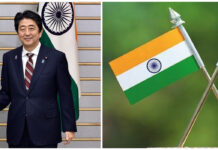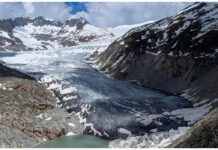Plastic Pollution: The Green sea turtle is named for the green color of the fat under its shell. They are easily discriminated from other sea turtles on the basis of scales, they have a single pair of scales in front of its eyes, rather than two pairs of scales found on other sea turtles. Green sea turtles have a small head and blunt with a serrated jaw.
The Food of green turtles changes significantly during its life. When they are less than 8 to 10 inches in length, they eat worms, young crustaceans, aquatic insects, grasses and algae. Once green turtles grow more than 8 to 10 inches in length, they mostly eat seagrass and algae, the only sea turtle which is strictly herbivorous as an adult. Their jaws are finely saw-like which helps them in tearing vegetation.
Recently it has been revealed by the marine researchers that more than half of the world’s sea turtles are having plastic, in their guts as millions of rubbish continues to be discarded into oceans each year and enrich the sea with plastic pollution, said by the researchers of CSIRO.
The home of marine livelihood is polluted by the plastics. But the question arises how this plastic is getting into the sea. In fact, plastic pollution is caused by the accumulation of plastic waste in the environment. These plastics are categorized as primary plastics, such as cigarette butts and bottle caps, or secondary plastics, which is the result of the degradation of the primary plastic. On the basis of its size, it could be microplastics – small particles (<5 mm) of plastic dispersed in the environment – to macroplastics which leads to plastic pollution.
Plastic pollution gets introduced into the sea in different forms which include:
- The accumulation of plastic waste on land leads to plastic pollution.
- The accumulation of marine litter, fragments or microparticles of plastics and non-biodegradable fishing nets, which continue to trap wildlife and waste
- Waste causing the death of animals by ingestion of plastic objects
- The arrival of microplastics and microbeads of plastics from cosmetic and body care products
The plastic pollution into the sea is mainly through the objects which make it into the main sewer system either by being flushed down the toilet or carried by the rain into a street drain, and the water treatment plants are weighed down by excessive rain, and then those plastic floating objects can float right into the sea. When heavy rains arrive then, they swept the streets clean and overloaded combined sewers. And finally, all the plastic debris is washed into the sea.
It was sorry to know that approximately 1000 turtles found dead on Australian beaches and on their analysis it was found that hundreds of pieces of plastic was found in the animals’ guts.
These plastics included plastic bags, hard plastic fragments, balloons, lolly wrappers and pieces of rope.
Dr. Kathy Townsend of the University of the Sunshine Coast said on Friday (9th August) that some of the turtles had just eaten only one piece of plastic, which was enough to kill them. In one of the cases, it was seen that the gut was punctured, and in the other case, the soft plastic blocked into the gut.
Researchers say that once a turtle happened to eat one piece of plastic it will have 22 percent chance of dying and now, one can calculate if ingested 14 plastic items then the likelihood of death jumped to 50 percent and when the load reaches around 100 pieces, death is 100%.
Researchers said they knew that turtles were consuming a lot of plastic, but it was not certain if that plastic is responsible for caused the turtles’ deaths said by CSIRO Oceans and Atmosphere researcher Dr. Chris Wilcox.
Sea green turtles were among the first animals found to be ingesting plastic. Scientists have long known that marine animals by mistake eat plastic debris because the tiny bits of floating plastic looks like their prey. Especially, Green turtles often get confused with the floating plastic for algae and seagrass.
Now the researchers have become extra vigilant and will be studying all the 7 species of turtles to understand the effect of plastic on them. This will help scientists to determine the impact of plastic pollution on the global green turtle population.
This had laid down the stone to study other marine animals affected by plastic in the world’s oceans.
“Save Marine Life”
“We Can See the Difference but a Turtle Cannot”






















